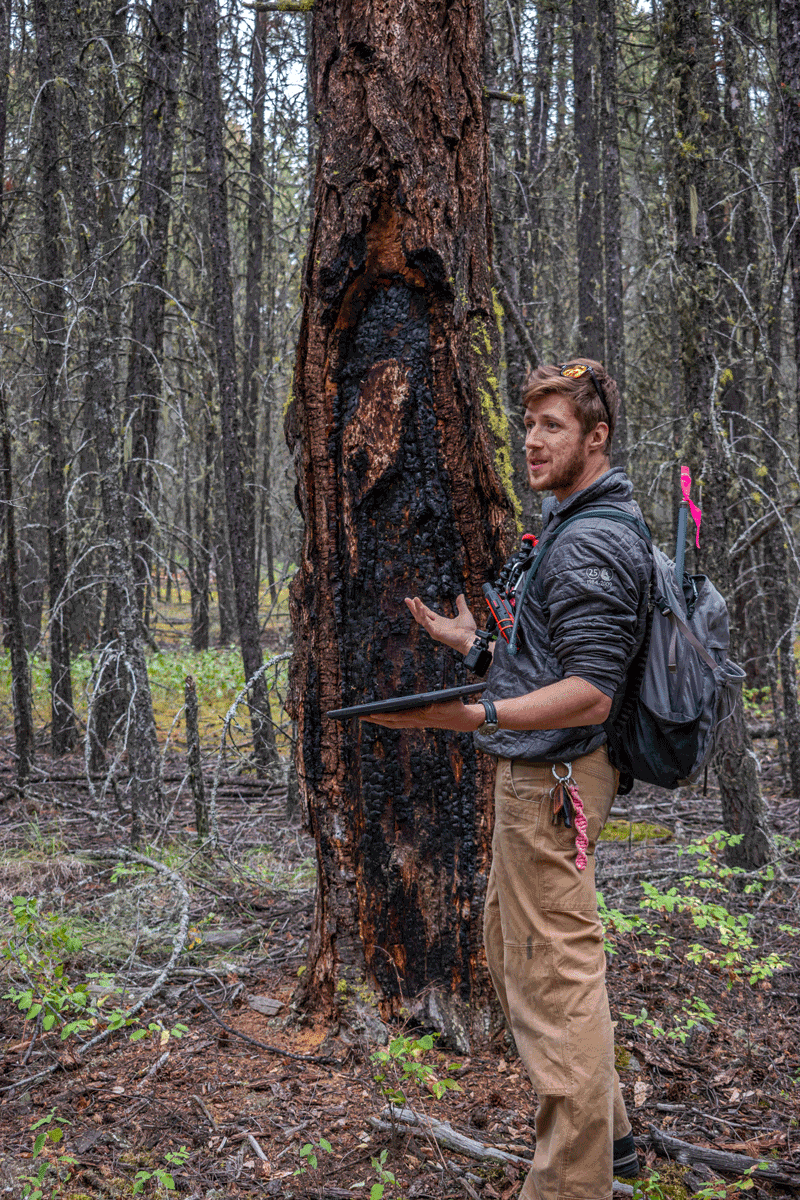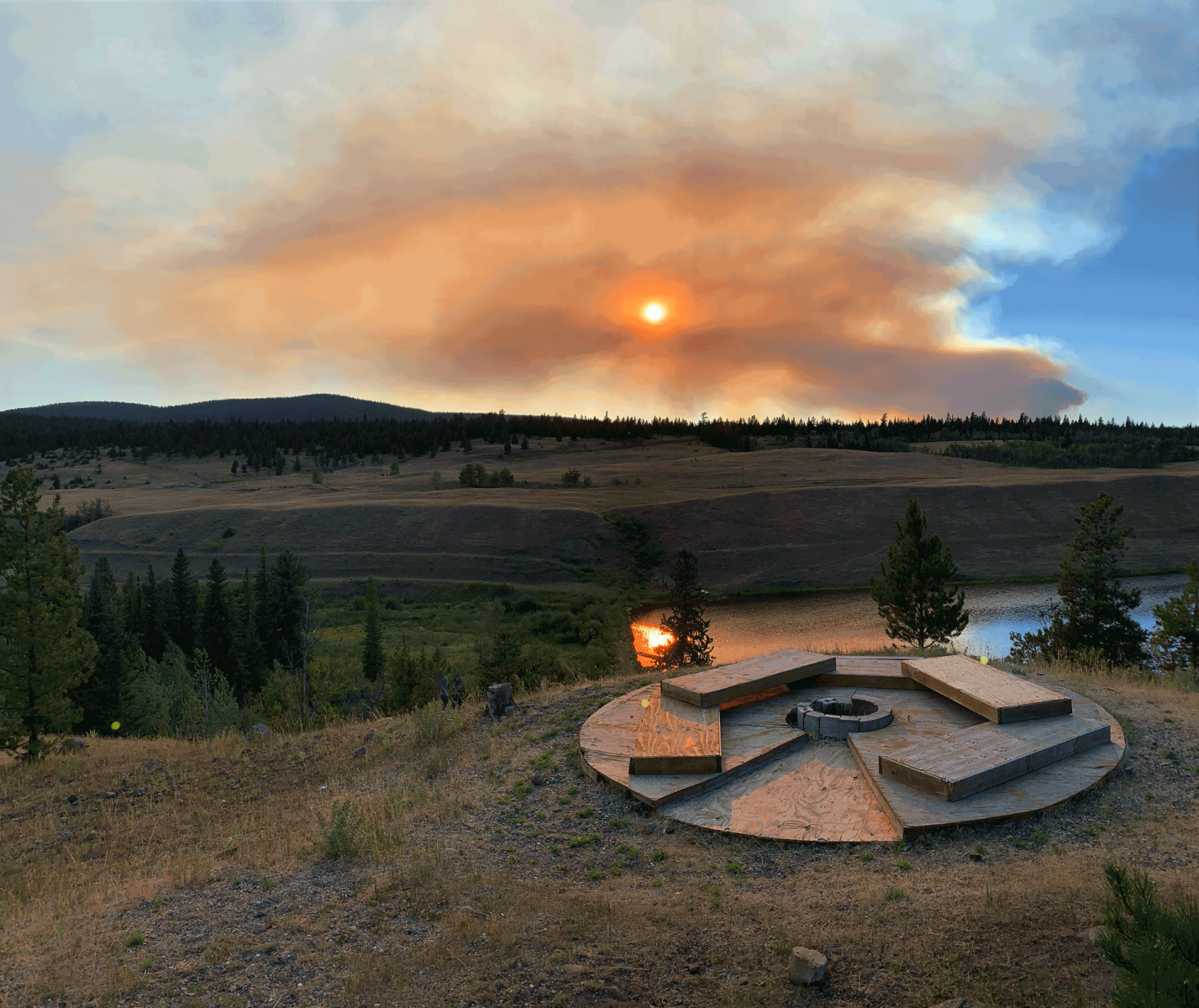Universities have largely benefited from an extractive model of research on Indigenous communities. In decades past researchers would visit Indigenous communities to conduct their research, and publish their results afterwards – often without consulting with the community, providing a chance for review, or providing copies of the data or final publication to the community. This extractive model of research can often make Indigenous communities wary of new community partnerships with universities and students in general.
But in the age of reconciliation, we need to switch to a new model, where communities are consulted, and relationships are reciprocal, ethical and not extractive. One where Indigenous Peoples can choose the types of research projects that are important to them and determine how they want to collaborate.
For Indigenous History Month, we highlight UBC graduate students who are breaking out of the extractive pattern.
The next up is Mike Stefanuk, a PhD candidate in Forestry, working in the Tree Ring Lab under the supervision of Dr. Lori Daniels. Mike, Lori, and Master’s student Georgina Preston partnered with Stswecem’c Xget’tem First Nation (SXFN) on wildfire research.
Like much of British Columbia, the aggressive wildfires of recent years have threatened SXFN, and SXFN citizens are concerned about wildfire risk to their communities. SXFN and Tree Ring Lab researchers partnered to research wildfire risk on SXFN traditional territory.
“This research is critical to community safety and validating, through the Western [science] lens, what community has known since time immemorial, for the need to manage the landscape for all sorts of features” says Kateri Koster, the Special Projects Advisor in the SXFN Stewardship Department. “The motivator for us to collectively come together and start a research project was to look at wildfire risk questions and other issues around wildfire and try to support SXFN in addressing wildfire risk,” Mike explains.

Mike standing next to a fire-scarred Douglas-fir tree, which has survived at least five fires in its lifetime. Trees like this hold the history of SXFN cultural burns and wildfires. Photo credit: Jonathan Garsson.
The SXFN lands near Canoe Creek, BC – in the Cariboo Region – have seen their share of wildfires. Approximately 1/5 of SXFN Traditional Territory has burned in wildfires over the last 15 years. But these lands have a long history with fire, including a history of Indigenous fire stewardship and cultural burning by SXFN, which had many benefits for the people, lands, waters, and wildlife.
One of the challenges that SXFN currently faces is the distinction between reserve lands and crown lands. While SXFN has the authority to manage and steward their reserves, they are restricted from practicing traditional stewardship on the crown lands near their homes. Kateri says this research “gives SXFN the ability to substantiate the critical need for wildfire mitigation NOW and supports SXFN to push back against current BC policy.”
Mike’s role in the project is to study SXFN’s wildfire history. He uses dendrochronology – tree-ring science – to reconstruct past fire events and gain insights into the history of fires around SXFN. Through his research, he acknowledges the significance of traditional Indigenous cultural fire use and land stewardship practices in SXFN’s history.
Mike takes research samples from fire-scarred living and dead trees. These can be as small as a pencil or as large as a coffee table and show that trees can be remarkably fire resistant – some surviving more than 10 fires in their lifetime. These fire scars may be from wildfires or from SXFN cultural burns, also known as ‘good fire’.
“I’m interested in how the large forest ecosystem functions – what are the processes at work? Why are forests the way they are?” Mike says this historical information on past fire events from tree rings and fire scars is helpful, but just looking to the trees for human history would not tell the full story of fire around SXFN. To learn this history, he had to start off in a good way.

Smoke from the Churn Creek Fire drifts over a long-dormant campfire pit at SXFN's Big Bar Guest Ranch. An evacuation alert was issued for SXFN communities because of this fire. Photo credit: Mike Stefanuk.
Looking at wildfire management and stewardship in SXFN traditional territory required several accommodations to ensure that the project met everyone’s needs. “As a scientist, I have to acknowledge my positionality. I am a settler, western, coming in from the outside. If I show up and start asking a bunch of personal questions, [it evokes] that history of [Indigenous] suppression,” says Mike.
The research team and SXFN negotiated an Indigenous research protocol agreement – an agreement that many First Nations, Inuit and Métis organizations use with external researchers. “It outlined the principles of respectful research, ownership control and access and possession of data, and how [researchers] will conduct themselves in this relationship with SXFN,” Mike explains. This agreement ensures that SXFN is able to access, help develop, and provide feedback on research all the way through the process to ensure that sensitive information and knowledge are protected.
Mike says having some humility is important for students, particularly in working with Indigenous communities. “If you’re coming in as an outsider, you are going to make mistakes.” SXFN was very welcoming and open to him, providing him with a chance to do better when needed. “I don’t think anyone should be expected to do [Indigenous-partnered research] perfectly when they first try, but learning from mistakes is the best way to do better.”
Another consideration for students is the start and end date of their research. Coming into an Indigenous community, getting to know people, setting up relationships, and building trust takes time. Being mindful of the communities' needs is also important as ongoing work; cultural events or community initiatives may dictate the timelines for their involvement in projects.
Mike encouraged students to consider how to stay in touch after they are done a given research project. “The more satisfying relationship is to stay around longer,” says Mike. Staying in connection with communities after the research increases accountability for positive and negative research impacts and helps to make research more meaningful. “I hope to stay in touch after the PhD is done.”
There can also be a process of ‘unlearning’ or ‘reshaping’ as you begin to see things from a community’s perspective. Though fear and destruction are often at the forefront when thinking about fire, Mike explains that fire can be many things. “There’s all these different values when we [talk about] fire stewardship and what that brings to the land.” What can be viewed from a Western perspective as a disturbance to the land may also be a really important process for regeneration.
“Fortunately and unfortunately (because Secwépemc [and] SXFN knowledge should be held up and given the same weight as Western knowledge [and] science) research projects like this enable SXFN to ‘speak the same language’ as external audiences – like BC and the pubic,” explains Kateri. “Research projects like this provide SXFN [with] the content [and] subject matter to communicate effectively to community, BC, external audiences, public etc. about the degree of [wildfire] risk and the need for prevention and mitigation.”
Mike says that some of his favourite memories of his PhD journey thus far are times gathered around a fire just talking to SXFN community members. “I have learned much more than I would have without working alongside SXFN, and I am very grateful to them for openly welcoming me onto their lands. I will see this work as a success if the science we create can support SXFN in stewarding their lands according to their traditions, for their benefit and safety.”
---------
Mike Stefanuk is a PhD candidate of Philosophy in Forestry (PhD) under the Faculty of Forestry and a UBC Public Scholar. Learn more about his research.
- Preston, Georgina and Stefanuk, Mike. “Wildfire and Stswecem’c Xget’tem First Nation: Past, present and future.” Canadian Wildland Fire and Smoke (Fall 2022).
For future graduate students interested in working with Indigenous communities, the first step is to speak with your graduate advisor, professor or program office to determine what might be possible for your program. Be prepared to do some research. You can consult one of the many on-campus resources such as the Indian Residential School History and Dialogue Centre, the First Nations House of Learning, or Indigenous.ubc.ca. Marina, Lizeth, Mike and G+PS staff have suggested a few resources below.
Recommended resources for students interested in research with Indigenous communities
- Carroll, S, et al. 2020. The CARE Principles for Indigenous Data Governance. Data Science Journal, 19: XX, pp. 1–12. DOI: https://doi.org/10.5334/dsj-2020-042
- "The First Nations Principles of OCAP®” First Nations Information Governance Centre. https://fnigc.ca/ocap-training/
- Truth and Reconciliation Commission of Canada. 2015. Honouring the truth, reconciling for the future: Summary of the final report of the Truth and Reconciliation Commission of Canada. https://collections.irshdc.ubc.ca/index.php/Detail/objects/9629
- United Nations Declaration on the Rights of Indigenous Peoples Act (S.C. 2021, c. 14). https://laws-lois.justice.gc.ca/eng/acts/U-2.2/page-2.html#h-1301627
- Kimmerer, Robin Wall. Braiding Sweetgrass. Milkweed Editions, 2015.
- Musqueam First Nation. Place Names Map. https://www.musqueam.bc.ca/our-story/our-territory/place-names-map/
- Resources for researchers. Indigenous Research Support Initiative, UBC. https://irsi.ubc.ca/researchers/resources
- Indigenous Forest Bioeconomy Program. https://www2.gov.bc.ca/gov/content/industry/forestry/supporting-innovation/ifbp
- “Where are the children” virtual exhibition. https://legacyofhope.ca/wherearethechildren/